Lateral roots form as part of the seminal root system that originated with the seedling radicle, while adventitious roots arise from places they would not ordinarily be expected to form like stems or leaves.
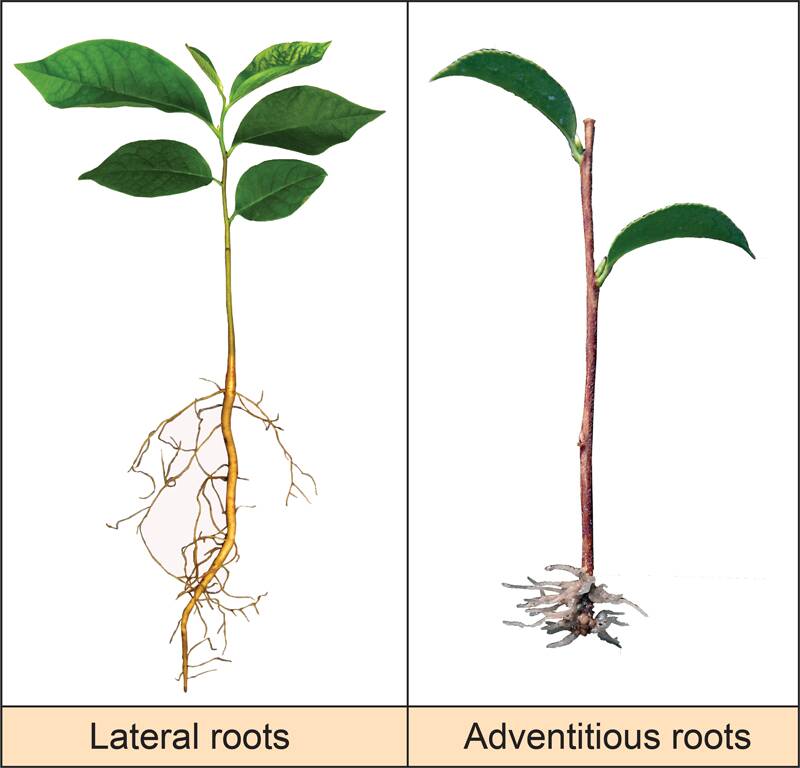
Lateral roots on a pawpaw seedling versus adventitious roots on camellia stem cutting.
Adventitious roots can form naturally on intact stems or wound-induced on detached stems or leaves.
Adventitious root formation on stem or leaf cuttings is the basis for vegetative propagation for many commercial greenhouse and nursery crops.
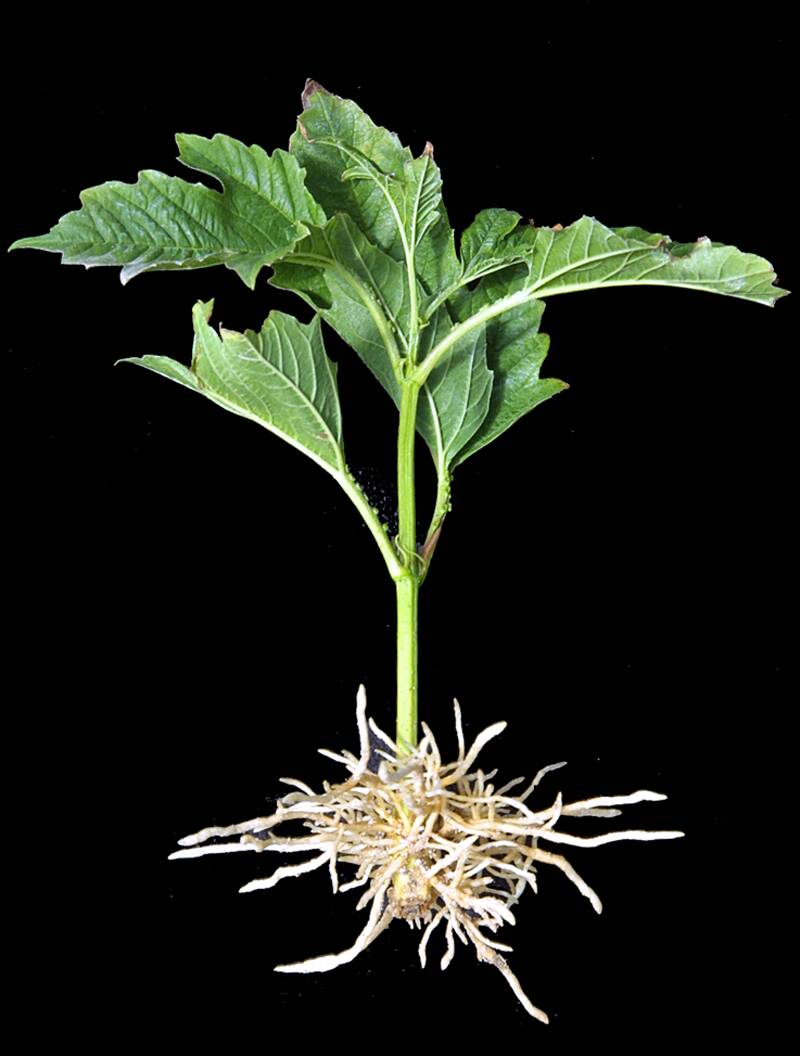
A rooted viburnum stem cutting.
Good examples of naturally forming adventitious roots can be seen on many monocot species.
A specialized type of adventitious roots called brace roots are formed to support upright stems.
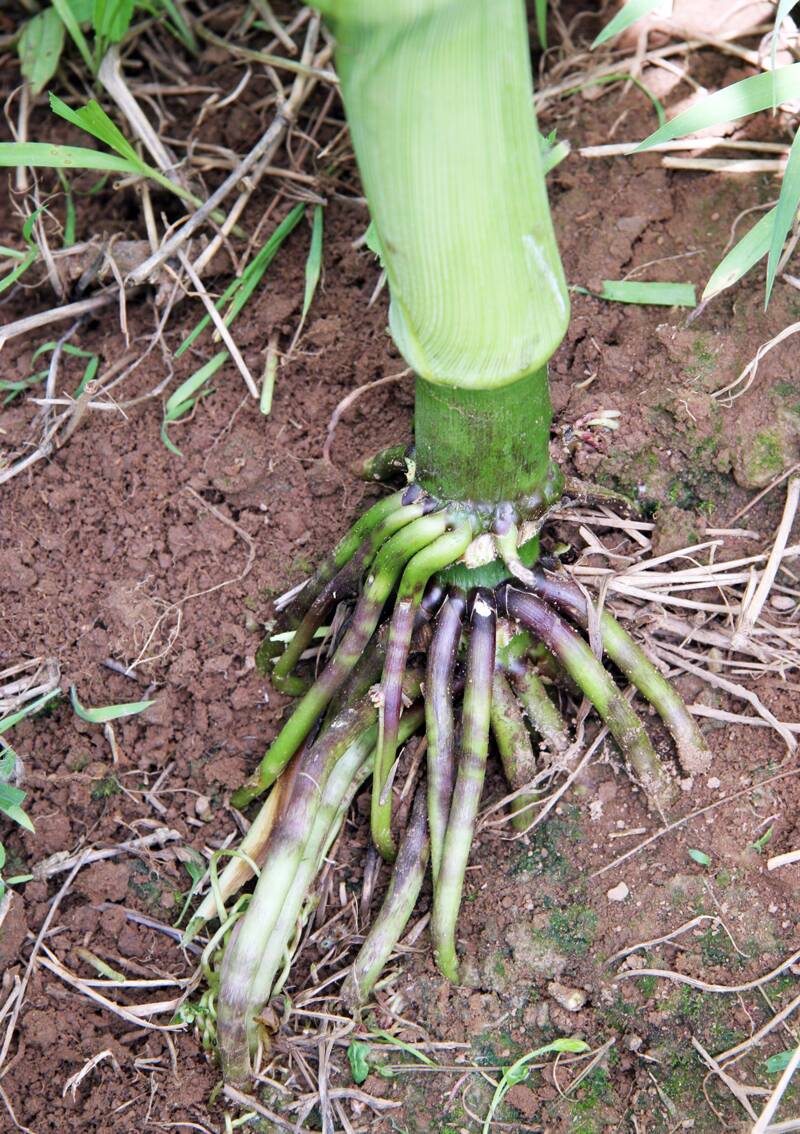
Brace roots in corn.
Another type of naturally occurring adventitious root support system can be seen in these prop roots on screw pine (Pandanus) that form on the lower part of the stem.
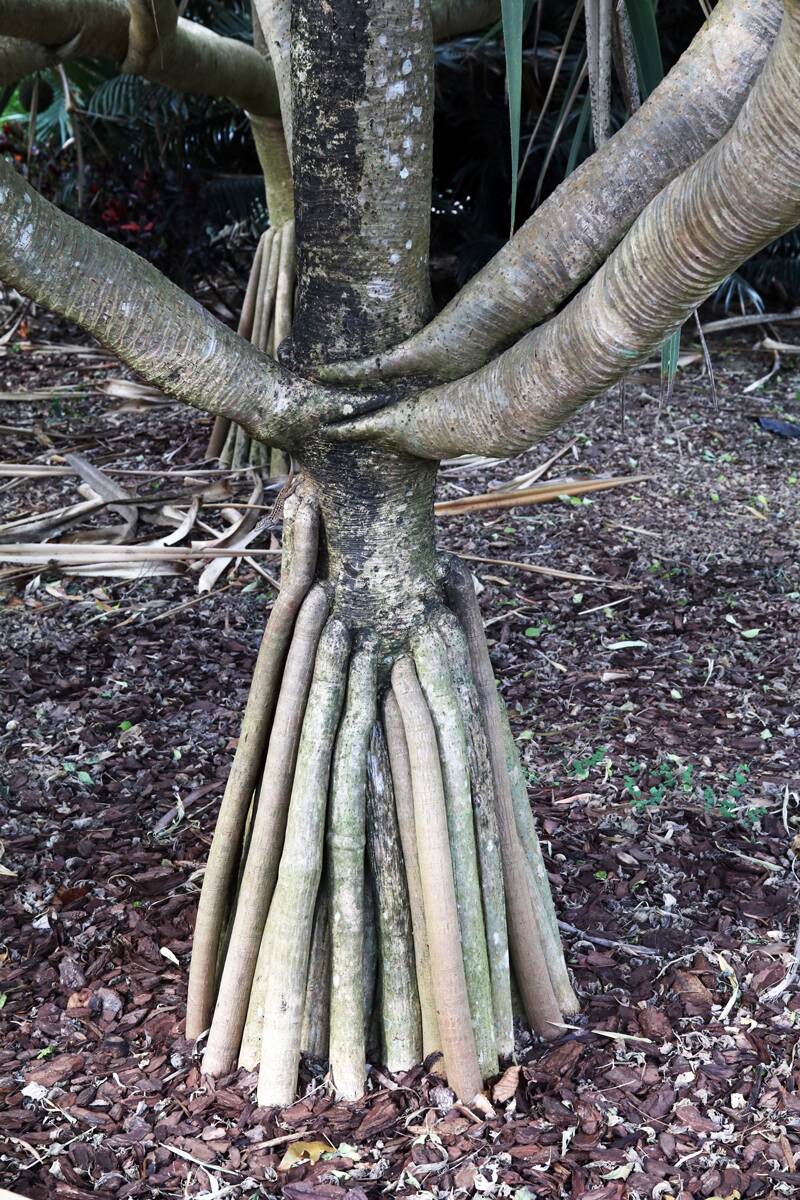
Adventitious roots on some vines allow them to climb and attach to upright surfaces.
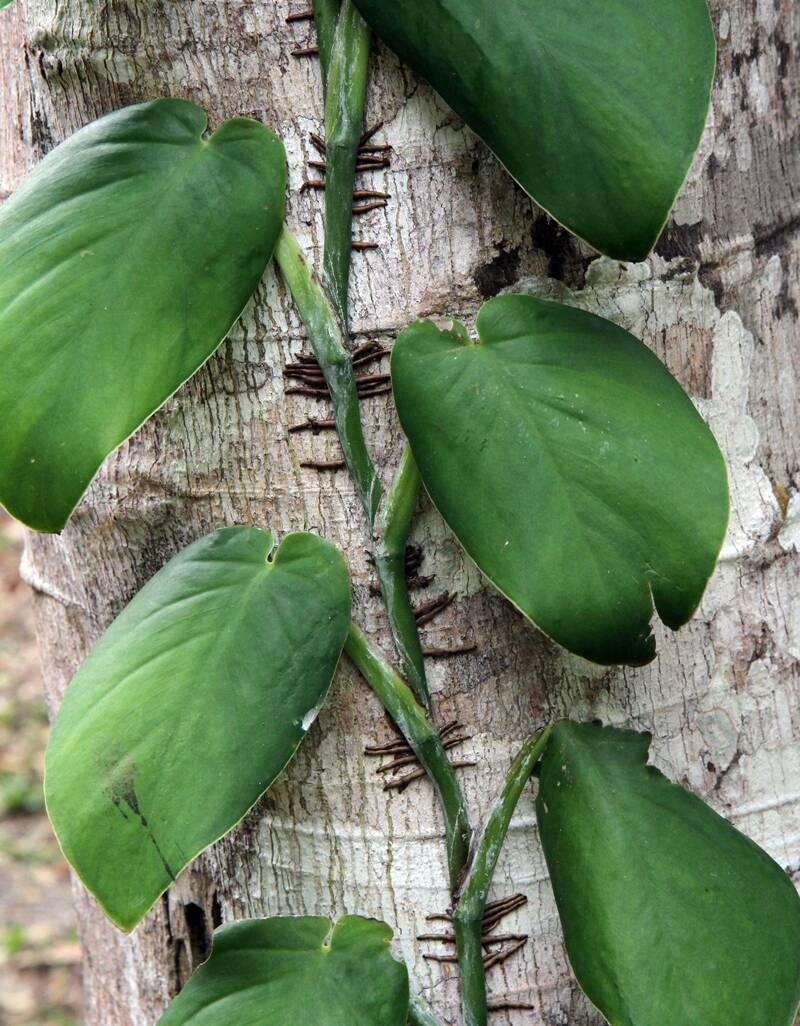
Adventitious roots attaching a climbing philodendron vine to a tree.
Adventitious roots form from cell in the stem or leaf through a sequential process that includes the stages of dedifferentiation; formation of root initials; development of root primordia and finally emergence of the root through the stem.
See - Stages of root formation for more information.
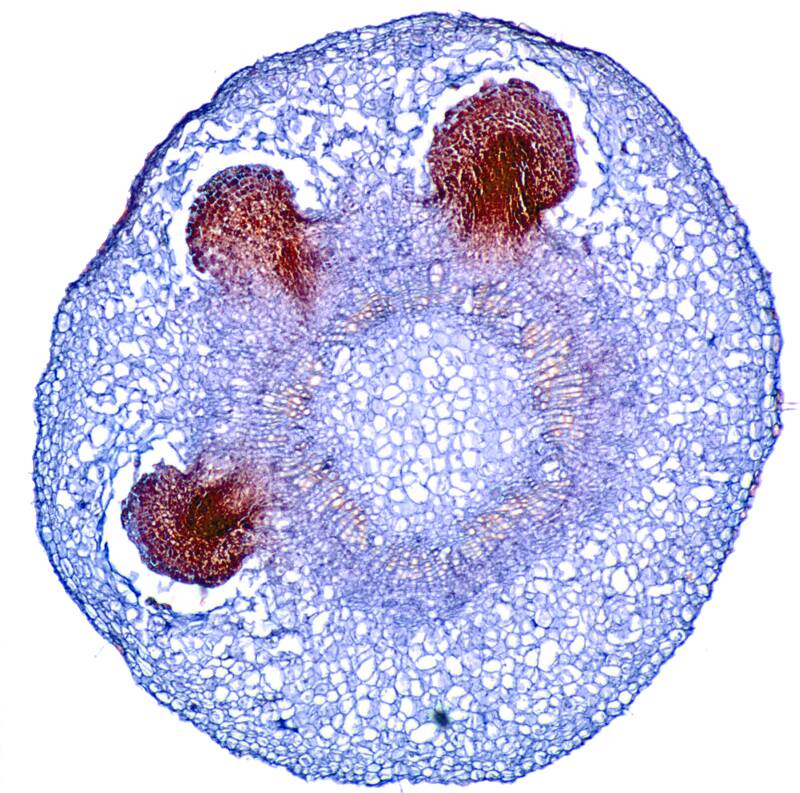
Stem cross-section in poplar showing developing adventitious roots.


